We’ve been told how important it is to foster self-esteem, but have we gone too far with pouring on the praise? The full study can be found at: Proceedings of the National Academy of Sciences.
Category Archives: Musings
Extended-day Kindergarten
The Kindergarten year for Primary students provides them with the opportunity to bring their educational, social, and mentorship abilities to fruition. They begin to:
- apply concepts of Practical Life activities to cultivate a sense of community
- apply the concept of sounds and words to become what Dr. Montessori termed as “total readers” who are able to grasp the psychological and emotional content of written text versus mechanical readers in Language
- begin transitioning from the use of concrete materials to abstract understanding
- explore enriched Cultural Studies included in all elements of the classroom.
PRACTICAL LIFE & COMMUNITY
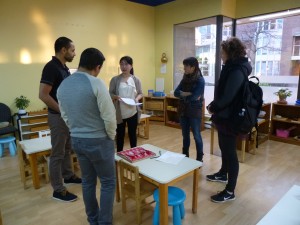
Not only are Practical Life exercises the foundation for learning in the Montessori environment, they are the cornerstone in a child’s development as a member of a community. The purpose of the Practical Life area is to help children develop coordination, concentration, independence, and a sense of order. The real-life activities also help develop the skills children will need for life as citizens of this world.
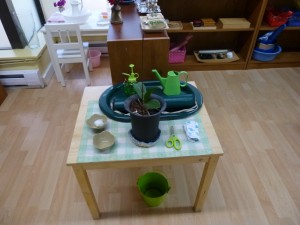
For students in their third year at our school, Practical Life exercises evolve into focusing on contributing and caring. Practical Life activities at this stage become more meaningful to the older children, as now, they complete them for the well-being of the community – from taking pride in caring for the plants and maintaining the beauty and cleanliness of the classroom to assisting and being role models for the younger children.
Through Practical Life exercises, the Extended-Day students are encouraged to use their independence as leaders and role models in the classroom. For example, the older students prepare snacks in the morning for the entire class. At lunch, they set the lunch tables. After lunch, they are in charge of cleaning up, which includes sweeping up crumbs and washing all of the dishes. Throughout the day, the Extended-Day students help younger students in the cloakroom by zipping up jackets and tying shoe laces. The younger students look up to the older students, giving the older students a sense of responsibility as they become self-reliant, strong, positive leaders.
All students in the Casa environment develop a sense of responsibility and self-confidence as they take care of the needs of the environment as well as the community. The third-year is extremely important as it is the year that everything the students have learned in previous years comes together. These experiences and feelings of self-confidence and responsibility are extremely valuable and irreplaceable.
LANGUAGE: Total Reading vs. Mechanical Reading
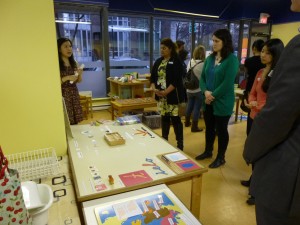
The key concept in Language for the child in the third, Extended-Day year of our program is Total Reading. This concept is based on the preparation of the mind and hand in the first and second years.
Dr Montessori introduced the concept of Total Reading as opposed to Mechanical Reading because she understood that true reading pertains to a complex mental activity and not merely to a verbal activity. For Dr. Montessori, language must be invested with meaning.
Mechanical Reading: To read mechanically is to simply sound out and link the various letters into words. Therefore, Mechanical Reading does not fully grasp the intention and emotions passed forth by the author.
Total Reading: Total reading is the perception of ideas through symbols where one is able to read in such a way so as to understand everything that the author wants to convey. Total Reading implies that the child experiences the completeness of understanding of what he reads, where he is able to relate to the author’s style and emotion. When mastered, it is a skill that lets one both gather information and fully relate to others.
There are various techniques used throughout our language program that lead to Total Reading. Some examples are:
- Using words within a context; for example, the use of illustrations and objects related to the word or words, as well as using words in a sentence.
- Giving the meaning of words; for example, using a dictionary or acting out what is being read.
- Using leading questions such as Who is it that? What kind of?
- Symbolizing so as to allow the child to perceive a linguistic pattern, as well as the relationship among the words in a sensorial manner.
- Transposing words to introduce to the child, the notion that meaning is also dependent on a wordʼs position within a given sentence.
It is our aspiration that through Total Reading, children will develop a love for literature and facile use of language in their everyday interactions.
MATHEMATICS
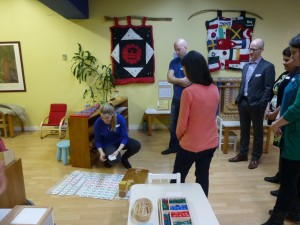
Math is a big concept for children to understand and is a process that cannot be rushed or forced. In our classroom, we aid the child’s process of abstraction of Math concepts by providing the child with many exercises that introduce different, individualized qualities. We do not teach children math when they first enter the classroom at age 3 because they must first develop their “Mathematical Mind”. The development of the Mathematical Mind unfolds in the first year. When the child has developed a certain level of clarity in their mind, the child will be ready to learn mathematical concepts. Attending Montessori for the full three years is very important for a child’s progression in math as the third year is the culmination of all of the indirect preparations and foundational math work done in the first two years.
There are four different qualities to look for to know the child is ready for math:
1. The child can establish patterns.
2. The child can establish relationships.
3. The child has an orderly mind.
4. The child can classify his or her surroundings.
There are three important qualities of the math materials in the classroom:
1. The child comes into physical contact with a concept that will become abstract, thus the child can first physically touch and manipulate a concept.
2. Only one concept at a time is presented to the child, always building on a previous concept that has been learned. We will not overwhelm or pressure children, so they develop a love of learning.
3. There are controls of errors within each material enabling the child to discern a mistake has been made.
There are six different areas of our math program:
1. Numbers from 0-10
2. The Decimal System
3. Counting numbers 1-1000
4. Exploration and memorization of the tables
5. Passage to Abstraction
6. Introduction to Fractions
Math is a journey that begins during a child’s first year in the Casa and truly comes together in the third year.
CULTURE
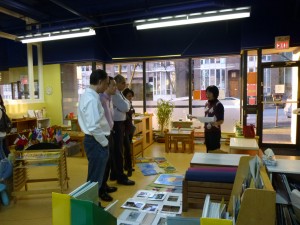
In the Montessori Primary program, we do not separate culture as a subject since the Practical Life, Sensorial, Language, and Math areas all inherently contain culture. It is a very significant area in the classroom that is present without being directly categorized. Cultural activities are found in art, music, writing of stories, geography, botany, zoology, and history.
Cultural activities require the integration of knowledge involving the hands, the senses, language (in a concrete context), and a mathematical mind (order, precision, and exactness), all of which are beyond the basics of the four areas of the classroom. The child’s work with culture is a continuation of the exploration of the materials surrounding them. When exploring cultural activities, we often encourage imagination with such materials as:
- Geography Folders: children first learn the material through verbal conversation, question-and-answer games, observation and matching. Next, the classification of continents is explored. Classification of flora, fauna, transportation, and landscape follows. This leads to writing, drawing, and reading on a particular subject, such as life cycles, people, tools, planets, beauty, climates, nature, bones, rocks, ocean life, etc.
- Constructive Triangles (from the Sensorial area): children explore the concept that all shapes can be made by different types of triangles. This concept of joining points and creating shapes in space can grow into amazing discoveries of the world around us.
Through cultural activities, children learn different patterns in the world. They find answers to the questions of “how”. Children develop embellishment and humour. They uncover positive associations in different subjects. They practice calmness, which facilitates and maximizes independent learning and exploration. They learn to live with nature in an environment that is cultivating their love for learning. Ultimately, their learning experience truly becomes their own.
The Teenage Brain
The education program for adolescent students proposed by Dr Montessori over 90 years ago was that of a farm school. She envisioned this to be a place where students would grow their own food, experiencing life as close to the land and nature as possible. She called this program “Erdkinder”, which translates to English as “children of the Earth” or “children of the land”. According to Dr Montessori, attending such a school would provide young adolescents with the opportunity to become psychologically and economically independent, thereby preparing them to be capable and contributing adults in society.
The Globe and Mail recently published an insightful article on brain development during the teen years and beyond. It also provides a supportive case for heeding Dr. Montessori’s advice to “follow the child” – why education must correspond to respective developmental stages.
Is loss of cursive writing affecting children’s development?
Ever wonder why Montessori schools still use cursive? Take a look at this MSNBC interview with writer, Maria Konnikova discussing her article (New York Times, June 2014) on cursive writing in schools and how it can have an impact on the brain beyond childhood.
